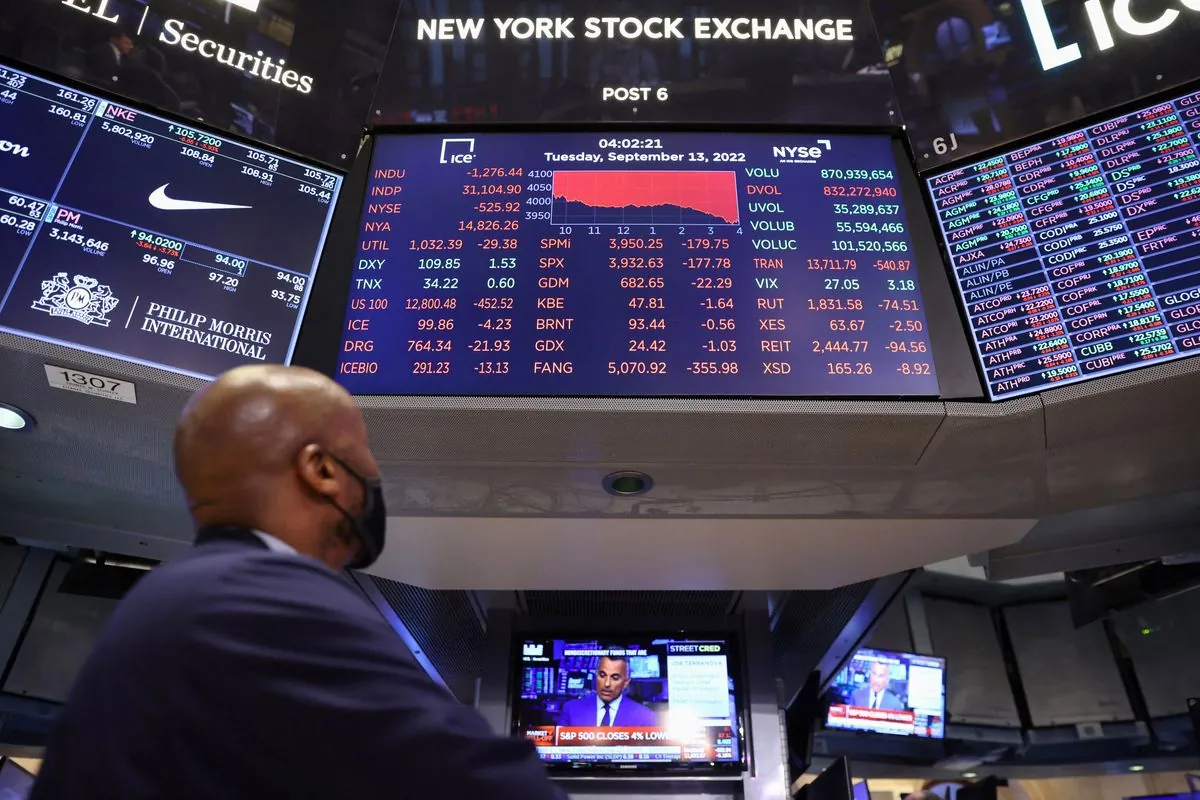Wall Street Indexes Dip as Investors Eye Job Reports and Fed Comments
Wall Street's main indexes opened lower as investors pause after last week's rally. Markets await job reports and Federal Reserve policymakers' comments, including Chair Jerome Powell's remarks.

As the week commenced on September 30, 2024, Wall Street experienced a slight downturn in its major indexes. This decline followed a period of market gains in the previous week, reflecting a cautious approach by investors in anticipation of significant economic indicators and policy statements.
The Dow Jones Industrial Average, a benchmark that has been tracking market performance since 1896, opened at 42,235.06, marking a decrease of 77.94 points or 0.18%. Similarly, the S&P 500, which represents about 80% of the total U.S. stock market value and has been a key indicator since 1957, fell by 11.43 points or 0.20%, starting the day at 5,726.74. The tech-heavy Nasdaq Composite, established in 1971 as the world's first electronic stock market, also saw a decline of 44.76 points or 0.25%, opening at 18,074.83.
This market hesitation comes as investors brace for a series of important job reports and await comments from Federal Reserve policymakers, including Chair Jerome Powell. The Federal Reserve, created in 1913 in response to financial crises, plays a crucial role in shaping economic policy with its dual mandate of promoting maximum employment and maintaining stable prices.

The current market sentiment reflects the delicate balance between recent gains and future uncertainties. The term "bull market," originating from the upward thrust of a bull's horns, has been used to describe the optimistic trends seen in recent times. However, the possibility of a "bear market," a term believed to stem from 18th-century bearskin jobbers, looms as investors exercise caution.
It's worth noting that the U.S. stock market has shown remarkable resilience over the years. The longest bull market in U.S. history lasted from 2009 to 2020, demonstrating the market's potential for sustained growth. However, history also reminds us of significant downturns, such as the Great Depression, which saw the Dow Jones lose 89% of its value between 1929 and 1932, and the "Black Monday" crash of 1987, when the Dow plummeted 22.6% in a single day.
As markets evolve, so do trading practices. Today, high-frequency trading accounts for over 50% of U.S. equity trades, a far cry from the early days of the New York Stock Exchange, founded in 1792. The landscape of Wall Street itself, named after a wall built by Dutch settlers in the 17th century, has transformed dramatically since the rise of joint-stock companies in the 1600s gave birth to the term "stock market."
Regulatory bodies like the Securities and Exchange Commission (SEC), established in 1934, continue to play a vital role in maintaining market integrity. This oversight, combined with the Federal Reserve's policies, will be crucial as investors navigate the coming days, analyzing job reports and parsing the words of Fed officials for clues about the economic outlook.
As the market opens with a cautious tone, it's clear that the interplay between historical trends, current data, and future expectations continues to shape the dynamic world of Wall Street investing.


































